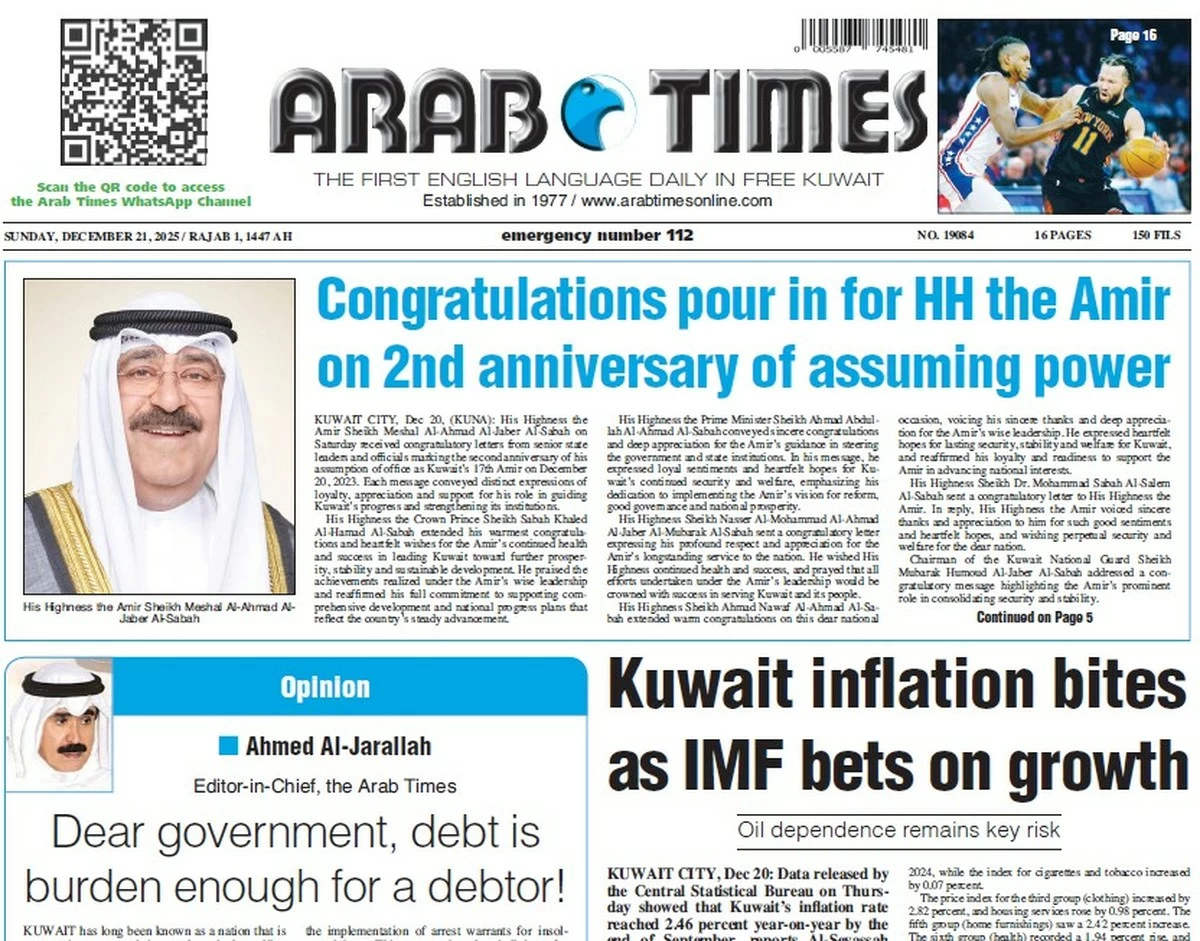17/01/2020
17/01/2020
KUWAIT CITY, Jan 16, (KUNA): Living in spacious apartment buildings have been touted as a viable housing option for Kuwaiti citizens as the demand for such service continues to grow. While the option is virtually available for all citizens willing to live within the boundaries of an apartment, the decision is still governed by personal preferences as well as social status and financial capabilities.
The 1993-established Public Authority for Housing Welfare (PAHW) is encouraging citizens to live in apartment buildings via displaying the many perks of a spacious apartment with facilities and services catering to the needs of each Kuwaiti family. Recently, PAHW – which implements government-housing policies – prioritized requests for apartments in Jaber Al-Ahmad city within the 2019-20 budget and this included requests submitted up until December 31st of last year.
Requests for government apartments are on the rise, said Ibrahim Al-Nashi PAWH spokesman – in a statement to KUNA. He added that requests for apartments were increasing especially in the Jaber Al-Ahmad city and the northwest Sulaibikhat area.
For example, he indicated that in Jaber Al-Ahmad, there were 520 apartments with around 610 citizens submitted housing requests. The cost of a 400-squaremeter apartment varies between KD 60,000 and 70,000 (about $198,000 and $230,000) with citizens paying back the government a monthly installment of KD 60 ($198), said Al- Nashi.
As PAHW is trying to sell the idea of spacious apartment buildings to the citizens, reactions varied amongst Kuwaitis with some preferring to wait their turn for a government full house while others are seriously contemplating the idea.
Project
On his part, head of the youth voluntary team for housing projects quality Khaled Al-Otaibi claimed that Kuwaitis were not too much eager to live in apartment buildings, citing the former 1980s Sawaber apartments’ project as an example of failure to gain social acceptance. Privacy is a major obstacle to overcome with the apartment buildings solution, affirmed Al-Otaibi, adding that would be the main concern for those trying to sell the solution to the masses.
Ahmad Al-Enezi continued on Al-Otaibi’s spiel, saying that apartments were a fixed deal with no room for improvements construction-wise if dwellers decided on that in the future. Most citizens have increasing needs whether it was welcoming newborns or trying to expand the space for the sake of expanding and apartments lack that no matter how the idea is good, he added. Al-Enezi said that with the lack of exterior spaces and probably noise from the neighbors, he failed to see the advantages of apartment buildings.
Al-Enezi’s thoughts is also shared by Bader Al-Nasser who indicated that most citizens would rather wait for housing or land allocated by the government than living in an apartment building. The only way Al-Nasser saw apartment buildings being successful is that if the government made such structures closer to the center of the city and residential areas and more private for families.
In contrast, Sumayya Al-Ali said that apartment buildings were interesting for those unwilling to wait for years to acquire a house, noting that the reasonable installment rates paid back to the government and short waiting period were better than high rents in private apartments. Al-Ali also added that apartment buildings were adequate to her familial needs at the moment, saying that she did not rule out the possibility of taking this option.
Hashem Al-Man’e, also an advocate of apartment buildings, affirmed that the solution was realistic for citizens, saying that units cater to the specific needs of five to six individuals within a family. He also noted that each apartment was built to address the privates needs for each family, adding that the idea itself was successful in his eyes.


